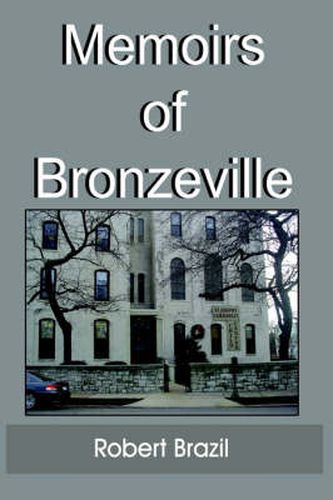Readings Newsletter
Become a Readings Member to make your shopping experience even easier.
Sign in or sign up for free!
You’re not far away from qualifying for FREE standard shipping within Australia
You’ve qualified for FREE standard shipping within Australia
The cart is loading…






This title is printed to order. This book may have been self-published. If so, we cannot guarantee the quality of the content. In the main most books will have gone through the editing process however some may not. We therefore suggest that you be aware of this before ordering this book. If in doubt check either the author or publisher’s details as we are unable to accept any returns unless they are faulty. Please contact us if you have any questions.
I have read many documents about the transition of young people, who have become successful after a transition, through dangerous neighborhoods. I never saw my neighborhood as dangerous, although it has been written about in Native Son, Quincy Jones’ biography “Q”, and many other books of repute. I had many role models and mentors in my neighborhood who were known world-wide, and my ventures were successful because of their diligence, and the close attention paid to my progress by some men who would normally be seen in society as anti-social. The Bronzeville area was developed during the first decades of the 20th century, this “city-within-a-city” was home to numerous nationally prominent, African-American-owned and operated businesses and cultural institutions. This district offered a commercial alternative to the race restrictions and indifference that characterized much of the city during the early part of the 20th century. Between 1910 and 1920, during the peak of the “Great Migration,” the population of the area increased dramatically when thousands of African-Americans fled the oppression of the south and immigrated to Chicago in search of industrial jobs.Further development of the area was halted by the onset of the Great Depression. Many famous people were associated with the development of the area including: Jesse Biga, banker; Anthony Overton, entrepreneur; Joseph Jordan, musician; Andrew “Rube” Foster, founder of the Negro National Baseball League; Ida B. Wells, a civil rights activist, journalist and organizer of the NAACP; Bessie Coleman, the first African-American woman pilot; and Louis Armstrong, the legendary trumpet player and bandleader who performed at many of the area’s night clubs. The name, “Black Metropolis,” became firmly established with the publication of a 1945 sociological study of the same title, in later years the area was referred to as “Bronzeville,” a term attributed to an editor at the Chicago Bee.
$9.00 standard shipping within Australia
FREE standard shipping within Australia for orders over $100.00
Express & International shipping calculated at checkout
This title is printed to order. This book may have been self-published. If so, we cannot guarantee the quality of the content. In the main most books will have gone through the editing process however some may not. We therefore suggest that you be aware of this before ordering this book. If in doubt check either the author or publisher’s details as we are unable to accept any returns unless they are faulty. Please contact us if you have any questions.
I have read many documents about the transition of young people, who have become successful after a transition, through dangerous neighborhoods. I never saw my neighborhood as dangerous, although it has been written about in Native Son, Quincy Jones’ biography “Q”, and many other books of repute. I had many role models and mentors in my neighborhood who were known world-wide, and my ventures were successful because of their diligence, and the close attention paid to my progress by some men who would normally be seen in society as anti-social. The Bronzeville area was developed during the first decades of the 20th century, this “city-within-a-city” was home to numerous nationally prominent, African-American-owned and operated businesses and cultural institutions. This district offered a commercial alternative to the race restrictions and indifference that characterized much of the city during the early part of the 20th century. Between 1910 and 1920, during the peak of the “Great Migration,” the population of the area increased dramatically when thousands of African-Americans fled the oppression of the south and immigrated to Chicago in search of industrial jobs.Further development of the area was halted by the onset of the Great Depression. Many famous people were associated with the development of the area including: Jesse Biga, banker; Anthony Overton, entrepreneur; Joseph Jordan, musician; Andrew “Rube” Foster, founder of the Negro National Baseball League; Ida B. Wells, a civil rights activist, journalist and organizer of the NAACP; Bessie Coleman, the first African-American woman pilot; and Louis Armstrong, the legendary trumpet player and bandleader who performed at many of the area’s night clubs. The name, “Black Metropolis,” became firmly established with the publication of a 1945 sociological study of the same title, in later years the area was referred to as “Bronzeville,” a term attributed to an editor at the Chicago Bee.